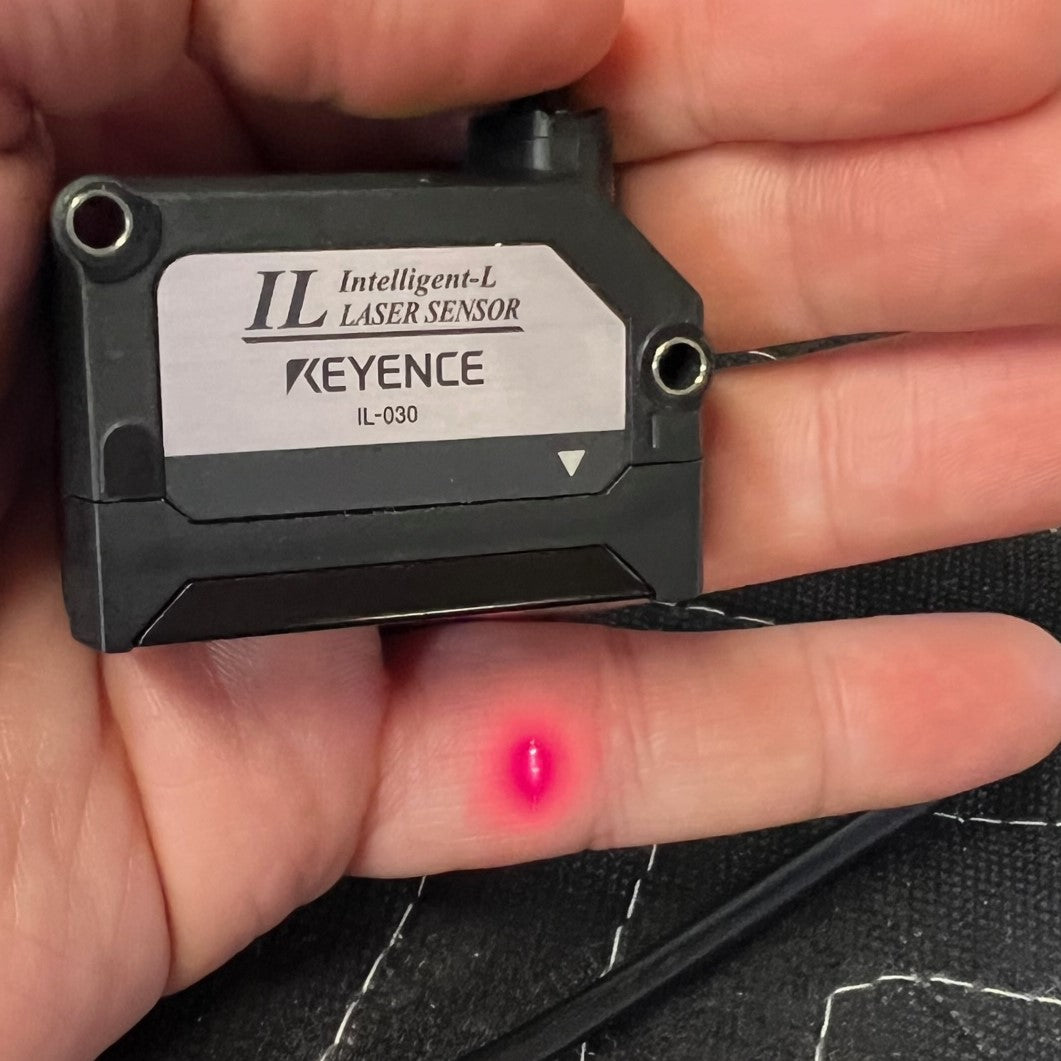In this blog I test a Keyence laser sensor for loudspeaker frequency response measurement.

Rationale
A laser offers immunity to room reflections or other behavior not related to diaphragm movement. The laser is positioned so that it reads the movement of the woofer cone and converts the movement into an electrical signal to be analyzed. Rather than lugging heavy speakers outside or constructed an anechoic chamber, a laser offers an appealing alternative along with some other benefits, assuming that it can actually work as intended. In hifi we are only interested in the linear part of the woofers frequency range, so if there are surround resonances or dust cap breakup then the laser won't pick this up unless it was pointed at the area of concern. So the laser could be used for localizing trouble spots on a woofer. It could also be potentially used to look at panel resonances on your enclosure.
Absolute Phase Reversed on Microp hones
It may come as a surprise that to many that a microphone only measures the acceleration of the air particles. It does not measure the velocity or displacement. This results in some unexpected anomalies in the initial impulse arrival where the signal takes a quick an awkward phase reversal almost immediately after the initial sound arrival. This phenomena is explained and demonstrated by Alpha Sound's video here. This phase reversal is covered at 23 minutes into the video.


So there are some peculiar limitations to the microphone that may potentially hinder one's study especially if we are investigating the topic of initial transients. This is one factor in why I want to pursue lasers for loudspeaker measurement.
Reaching out to Keyence
Since there are plenty of interesting applications for the laser, I reached out to Keyence who manufactures automation sensors which are typically used in manufacturing. The IL and LK series of sensors have the ability to output an analogue signal in the +/- 5v range. This signal corresponds the the physical distance measured in real-time by the laser sensor head. Keyence offered to loan me their more affordable IL sensor so that I could evaluate for my application. I've used Keyence sensors in plenty of previous projects in my former career and a Manufacturing Engineering Specialist.
Validation of Laser Sensor
Below is the Keyence IL-.030 sensor head tapped to my microphone. You can see the laser dot near the woofer's surround. Having the laser close to the mic helps directly compare the two in terms of frequency response.
Below is the measured frequency response of the woofer using the laser (red) and the ACO Pacific microphone (green). With the laser, there appears to be significant roll-off starting at 100Hz.

The laser head is connected to the IL-1000 amplifier unit which includes various adjustments such as sampling rate. For reference, I adjusted the amplfier for best performance using the following settings.
1. Polarity: normal
2. Sampling rate: 0.33 (fastest sampling rate)
3.Averaging rate: 1 (lowest averaging)
4. Alarm setting: default
5.Output: Normally Open
10. Analogue output scaling: -5 to +5v

Distortion
I then decided to look at intermodulation distortion using a 12 band per octave test tone signal from 50Hz-2kHz using a 75dB test signal level (1m). The ACO Pacific microphone produced around 65db of dynamic range.

Switching to the Keyence IL-030 laser revealed around 40dB of dynamic range.
Conclusion
The Keyence IL-030 sensor head along with the IL-1000 amplifier does not meet my target for linearity and non-linearity. The frequency response linearity showed significant deviation compared to my ACO Pacific reference measurement microphone. The distortion non-linearity shows very low dynamic range, making it unsuitable for distortion measurement of my DUT, in this case my 5" woofer. I plan to see if the local Keyence support can help identify any areas of improvement in the IL-1000 settings, or provide the LK series in an effort to improve resolution. The LK series is used in the Klippel laser displacement system found here and here.
Further Thoughts and Considerations
The ELP laser turntable uses a laser pickup head instead of a physical stylus.

If the laser technology used in this turntable can produce excellent sound quality then it should be possible to use it for loudspeaker measurement. This is one of the factors for pursuing this topic, since I know the technology at least exists. It has even existed since 1989 according to the ELP website!
Stay tuned for more to come!

